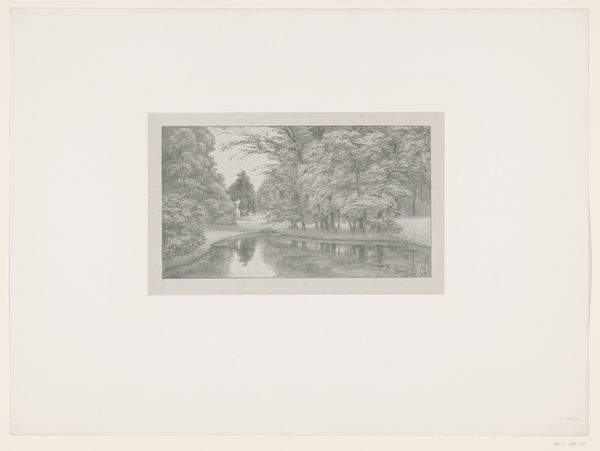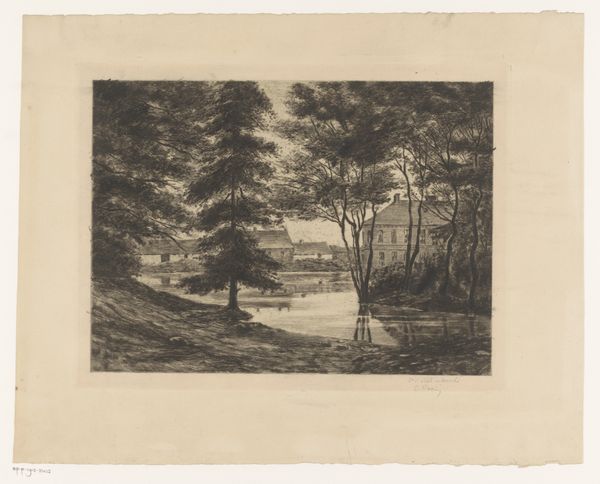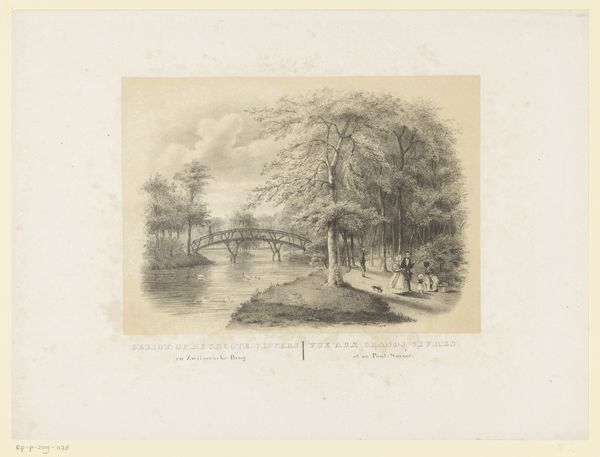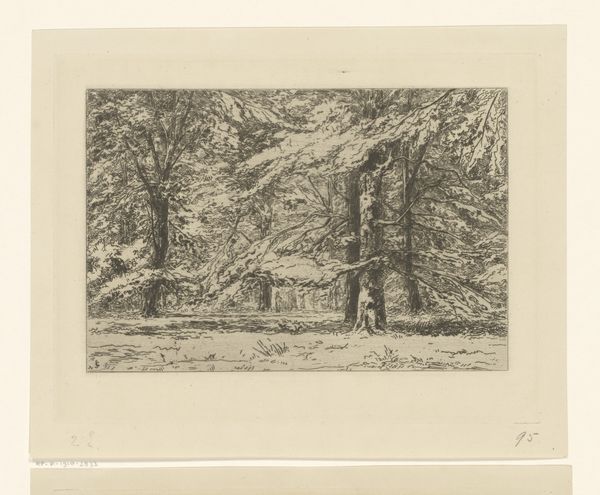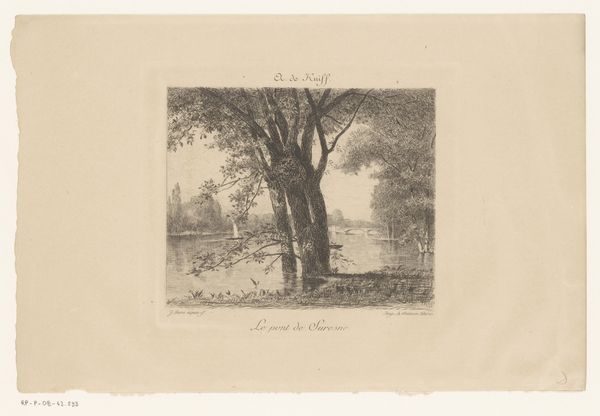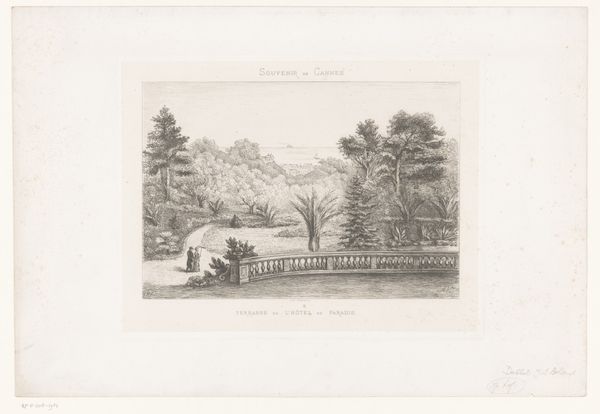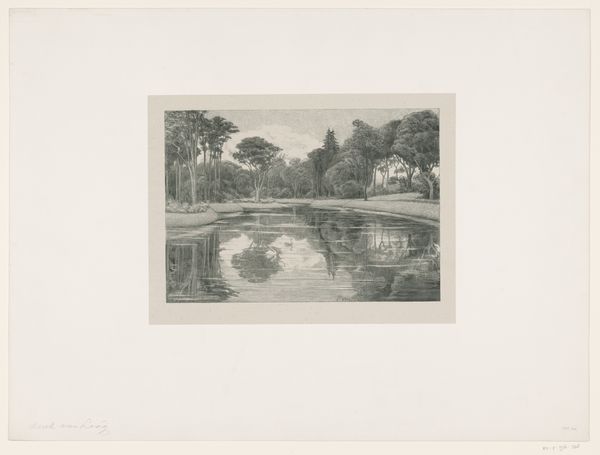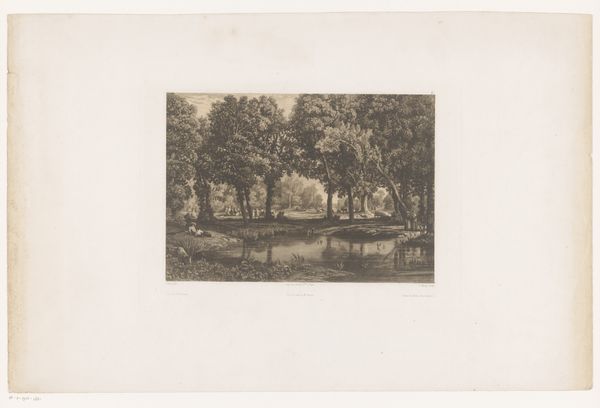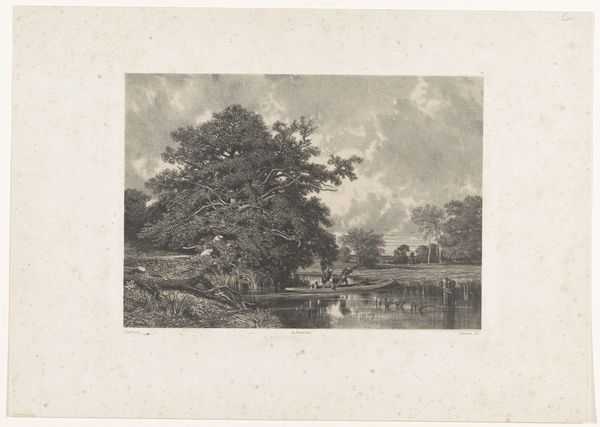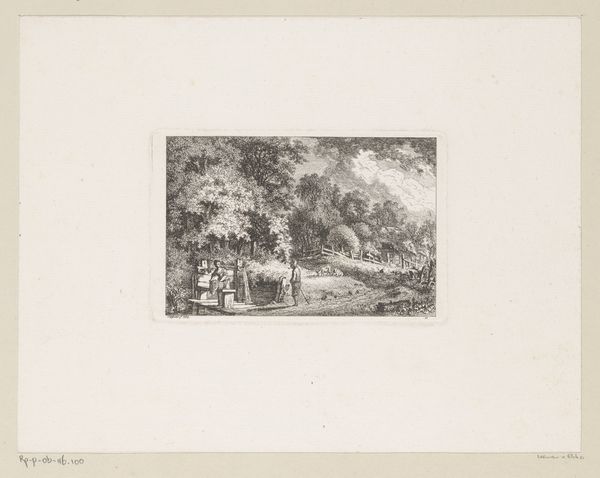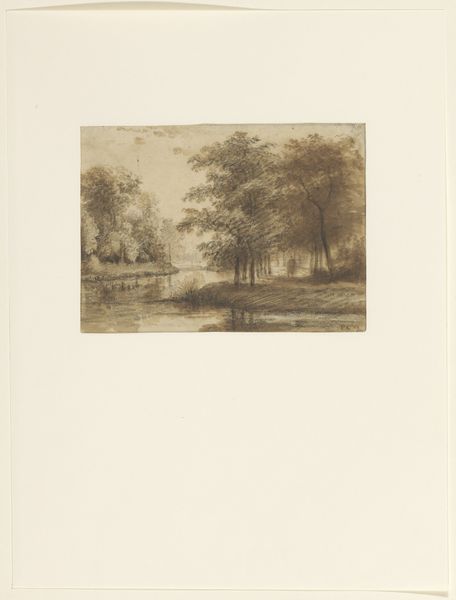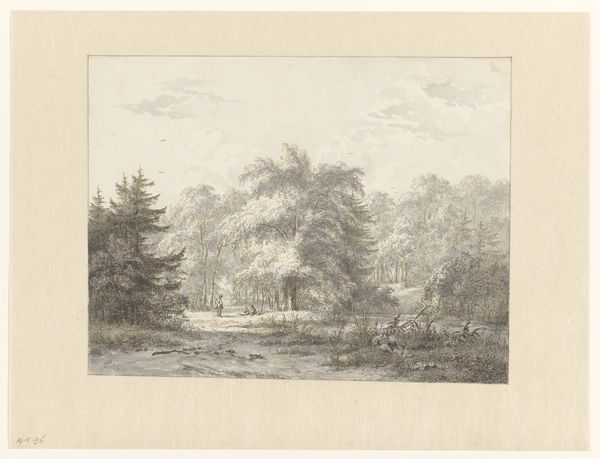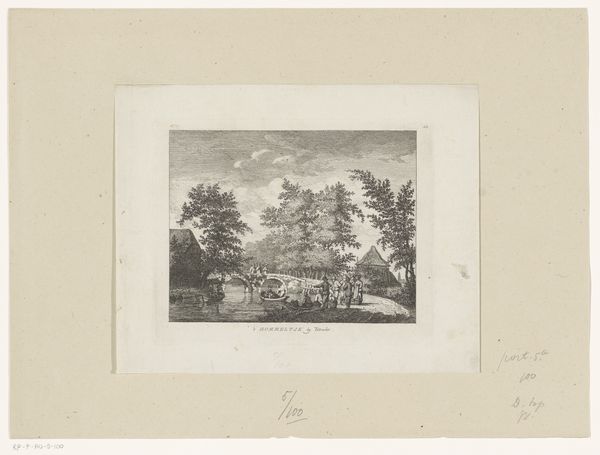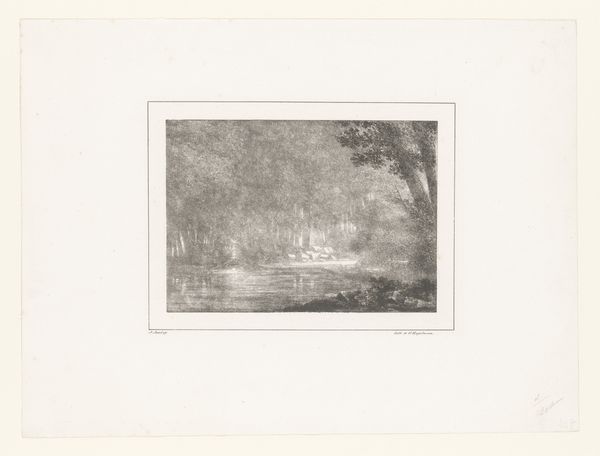
Dimensions: height 458 mm, width 610 cm
Copyright: Rijks Museum: Open Domain
Curator: Upon first view, I'm struck by how quiet this image is, almost ethereally so. The monochrome palette certainly contributes, but it's more than that. Editor: This is "Pond with Two Swans" by Simon Moulijn, crafted between 1906 and 1909. What we're seeing is a pencil drawing rendering an impressionistic landscape. Notice how the artist frames the scene, setting the tonal range with those striking dark trunks. But yes, an intimate sensibility is undeniable. Curator: And the delicacy with which those distant swans are suggested! It’s like a half-remembered dream, distilled to its essence. It begs the question: What pencils did Moulijn even use to achieve that level of softness? Was it hand-ground graphite? Was special paper sourced? Editor: We know this piece exists as part of a wider drawing practice. Moulijn created illustrations for books. He created studies that could inform later pieces, either in drawing or different artistic modes. It would be reductive to separate process and material from the end result. Curator: Indeed, I see your point about the broader implications of his choices and applications! Consider, however, how the structure supports that soft vision. The trees establish vertical anchors. Their reflection dances horizontally in the pond. Together, it resolves to an "X" and grounds that dream you rightly perceive. Editor: Well, let's remember this drawing also emerges during a period where urban expansion transformed the natural environment and affected both industry and economy. Were these parks intended as a way to display control and curation over nature for public enjoyment? Did that change in social values influence the material considerations behind works like these? Curator: Fascinating. The political considerations driving aesthetics would take us too far afield for today, though they clearly exist. Thank you for directing us back to the implications surrounding how labor intersects nature. It gives another perspective as to how deeply impactful even the most seemingly quaint scenes are to our society. Editor: Indeed. Each stroke here acts as both documentation and commentary. And ultimately that elevates the quiet drama inherent in this work.
Comments
No comments
Be the first to comment and join the conversation on the ultimate creative platform.
